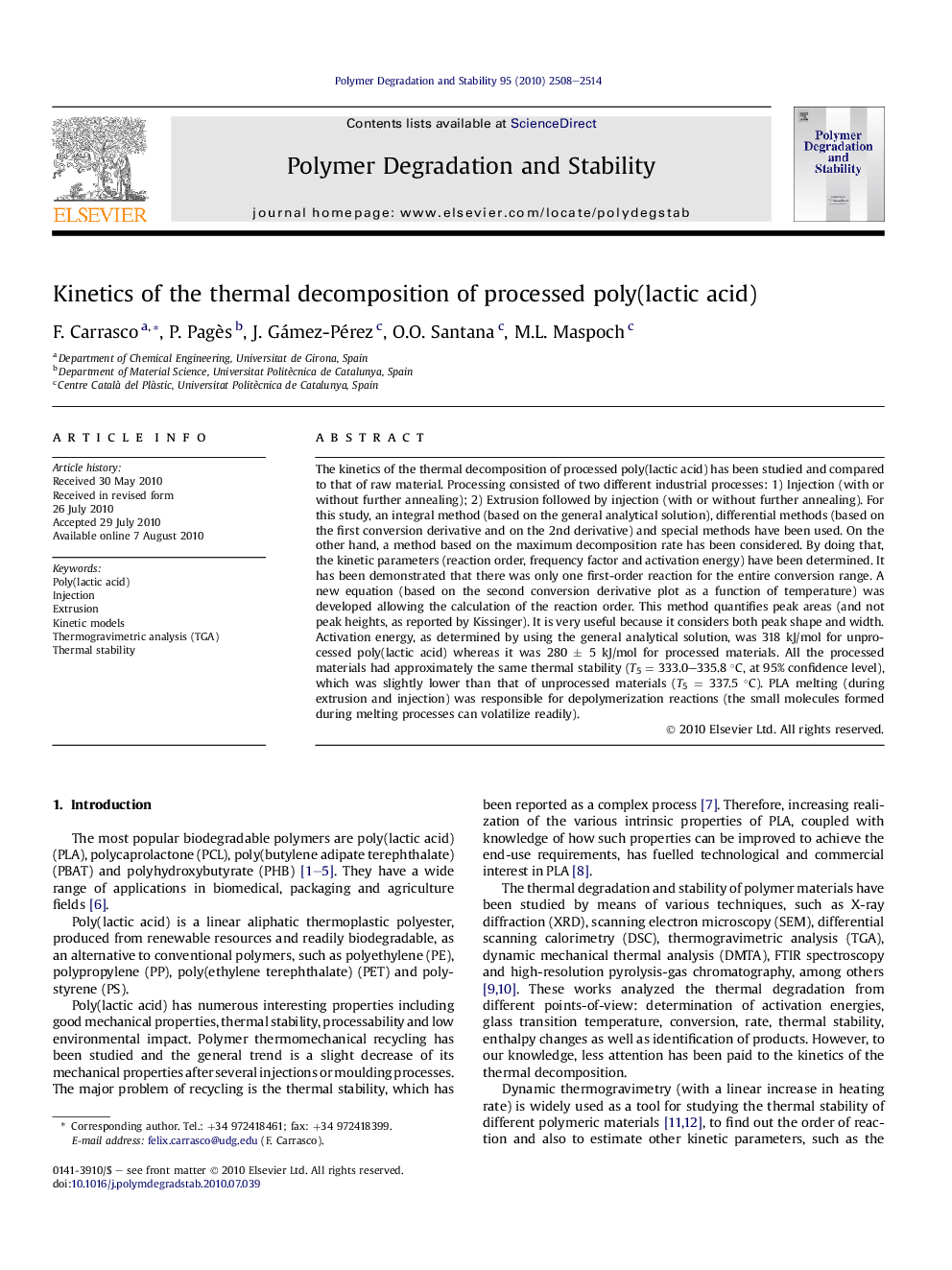| کد مقاله | کد نشریه | سال انتشار | مقاله انگلیسی | نسخه تمام متن |
|---|---|---|---|---|
| 5203199 | 1381923 | 2010 | 7 صفحه PDF | دانلود رایگان |

The kinetics of the thermal decomposition of processed poly(lactic acid) has been studied and compared to that of raw material. Processing consisted of two different industrial processes: 1) Injection (with or without further annealing); 2) Extrusion followed by injection (with or without further annealing). For this study, an integral method (based on the general analytical solution), differential methods (based on the first conversion derivative and on the 2nd derivative) and special methods have been used. On the other hand, a method based on the maximum decomposition rate has been considered. By doing that, the kinetic parameters (reaction order, frequency factor and activation energy) have been determined. It has been demonstrated that there was only one first-order reaction for the entire conversion range. A new equation (based on the second conversion derivative plot as a function of temperature) was developed allowing the calculation of the reaction order. This method quantifies peak areas (and not peak heights, as reported by Kissinger). It is very useful because it considers both peak shape and width. Activation energy, as determined by using the general analytical solution, was 318 kJ/mol for unprocessed poly(lactic acid) whereas it was 280 ± 5 kJ/mol for processed materials. All the processed materials had approximately the same thermal stability (T5 = 333.0-335.8 °C, at 95% confidence level), which was slightly lower than that of unprocessed materials (T5 = 337.5 °C). PLA melting (during extrusion and injection) was responsible for depolymerization reactions (the small molecules formed during melting processes can volatilize readily).
Journal: Polymer Degradation and Stability - Volume 95, Issue 12, December 2010, Pages 2508-2514